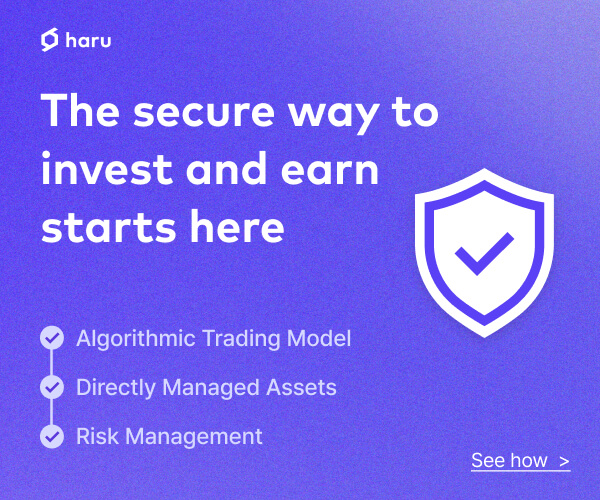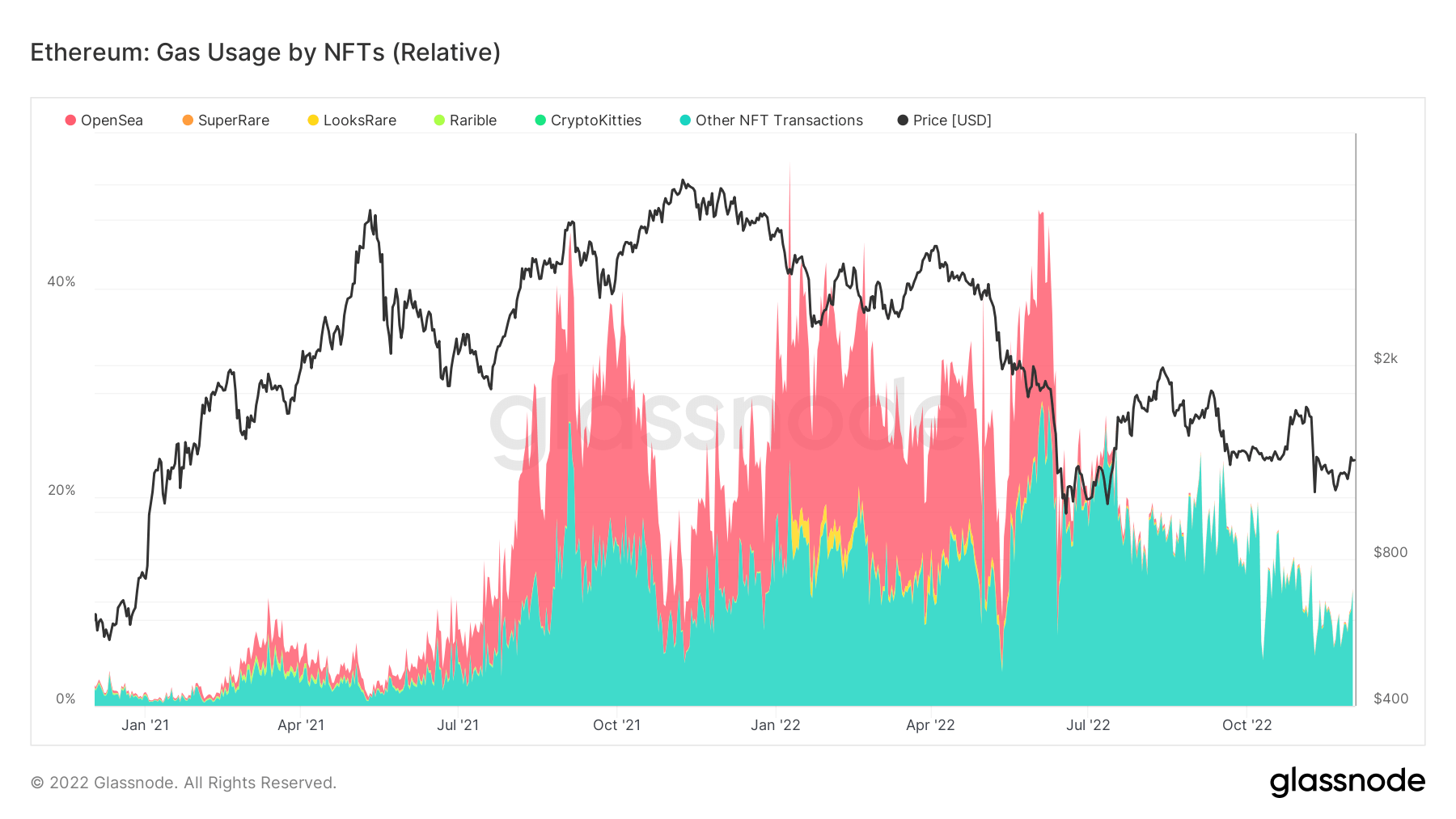
CryptoSlate’s analysis of gas consumption on the Ethereum (ETH) network based on transactions interacting with non-fungible tokens contracts showed that OpenSea’s gas usage has declined to almost zero.
The analysis included token contract standards (ERC721 and ERC1155) and other NFT marketplaces like LooksRare, Rarible, and SuperRare.

According to the above chart, overall gas fees in transactions related to NFTs peaked between October 2021 and January 2022. During this period, OpenSea accounted for roughly 20% of NFT gas consumption on Ethereum.
The largest NFT marketplace was still able to maintain its dominance in gas consumption until July, when it began to decline rapidly –this coincided with when the bear market was negatively impacting NFT sales.
OpenSea’s Ethereum NFTs trading volume has declined for five consecutive months, according to dune analytics data.
Layer2 networks’ gas consumption crosses $100 billion
Meanwhile, Ethereum layer2 networks spent over $100 billion in gas fees to validate transactions and operate their bridges on the mainnet in November, according to data shared by Paolo Rebuffo.
In November 2022 for the first time, L2 systems consumed more than 100b gas to validate transactions and operate their bridges on L1. 6 months ago in May 2022 the 50b gas threshold was exceeded for the first time.
A doubling time of the gas consumed by the l2 systems of 6 months. pic.twitter.com/hgUmKrx9pl— funnyking.eth zkHODLER 🦦🐛🦈 (@PaoloRebuffo) November 28, 2022
This represented an over 100% growth from the start of the year when the gas fees was $33.2 billion.
According to the data, Optimism was responsible for almost 50% of the gas fees, while Arbitrum took 30% of the fees. Other networks like dYdX, Loopring, and Starkware accounted for the rest.
Credit: Source link






















 Bitcoin
Bitcoin  Ethereum
Ethereum  XRP
XRP  Tether
Tether  Solana
Solana  USDC
USDC  Dogecoin
Dogecoin  Cardano
Cardano  Lido Staked Ether
Lido Staked Ether  TRON
TRON  Wrapped Bitcoin
Wrapped Bitcoin  Wrapped stETH
Wrapped stETH  Chainlink
Chainlink  Avalanche
Avalanche  Sui
Sui  Stellar
Stellar  Litecoin
Litecoin  Toncoin
Toncoin  Shiba Inu
Shiba Inu  Hedera
Hedera  LEO Token
LEO Token  USDS
USDS  Hyperliquid
Hyperliquid  Polkadot
Polkadot  WETH
WETH  MANTRA
MANTRA  Bitcoin Cash
Bitcoin Cash  Ethena USDe
Ethena USDe  Bitget Token
Bitget Token  Wrapped eETH
Wrapped eETH  Uniswap
Uniswap  Monero
Monero  NEAR Protocol
NEAR Protocol  Pepe
Pepe  WhiteBIT Coin
WhiteBIT Coin  Aave
Aave  Bittensor
Bittensor  Ondo
Ondo  Aptos
Aptos  Internet Computer
Internet Computer  Dai
Dai  Official Trump
Official Trump  Ethereum Classic
Ethereum Classic  Mantle
Mantle  Tokenize Xchange
Tokenize Xchange  OKB
OKB  Gate
Gate  sUSDS
sUSDS  Coinbase Wrapped BTC
Coinbase Wrapped BTC 
